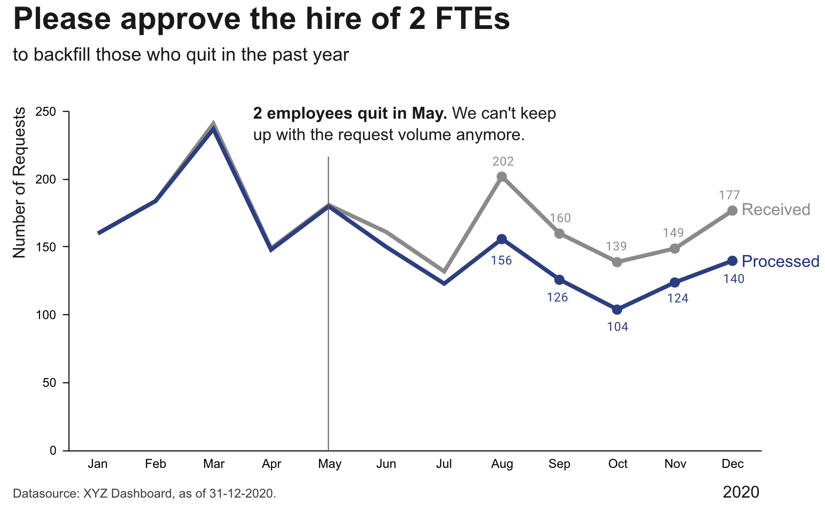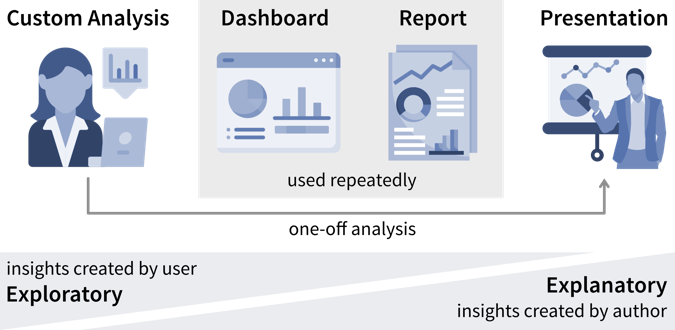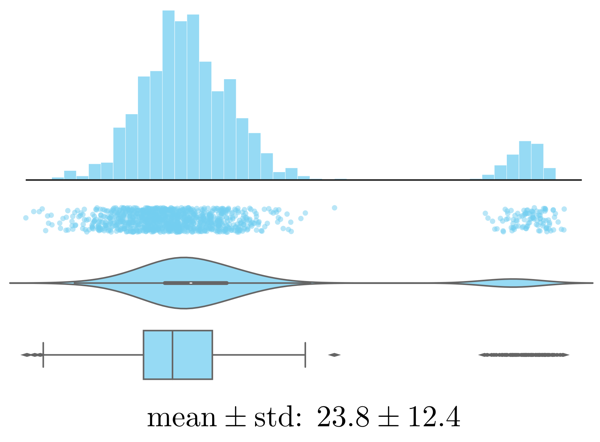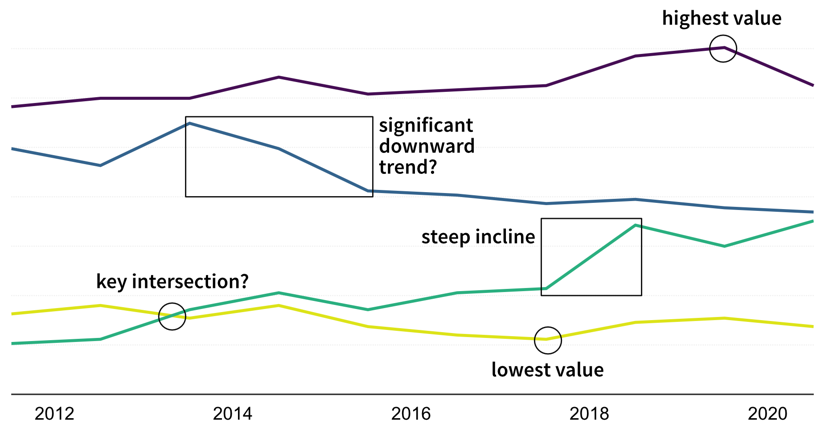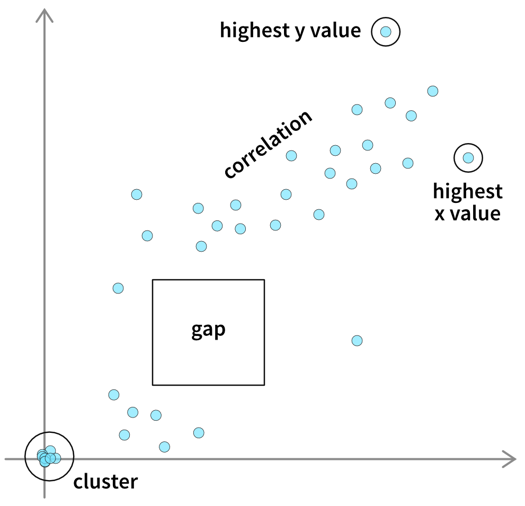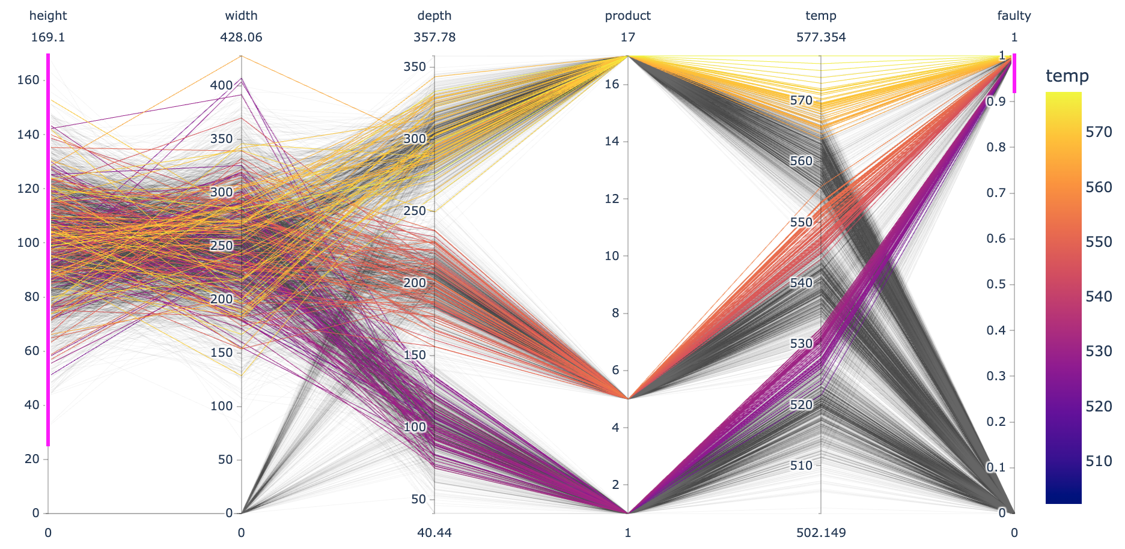Data Analysis
Analyzing data is not only an important step before using this data for a machine learning project, but can also generate valuable insights that result in better (data-driven) decisions. We usually analyze data for one of two reasons:
-
We need some specific information to make a (better) decision (reactive analysis, e.g., when something went wrong and we don’t know why).
-
We’re curious about the data and don’t know yet what the analysis will bring (proactive analysis, e.g., to better understand the data at the beginning of an ML project).
What all forms of data analyses have in common is that we’re after “(actionable) insights”.
Ideally, we should continuously monitor important metrics in dashboards or reports to spot deviations from the norm as quickly as possible, while identifying the root cause often requires a custom analysis.

| As a data analyst you are sometimes approached with more specific questions or requests such as “We’re deciding where to launch a new marketing campaign. Can you show me the number of users for all European countries?”. In these cases it can be helpful to ask “why?” to understand where the person noticed something unexpected that prompted this analysis request. If the answer is “Oh, we just have some marketing budget left over and need to spend the money somewhere” then just give them the results. But if the answer is “Our revenue for this quarter was lower than expected” it might be worth exploring other possible root causes for this, as maybe the problem is not the number of users that visit the website, but that many users drop out before they reach the checkout page and the money might be better invested in a usability study to understand why users don’t complete the sale. |
Data-driven Decisions
While learning something about the data and its context is often interesting and can feel rewarding by itself, it is not yet valuable. Insights become valuable when they influence a decision and inspire a different course of action, better than the default that would have been taken without the analysis.

This means we need to understand which decision(s) the insights from our data analysis should influence.
| Not all decisions need to be made in a data-driven way. But decision makers should be transparent and upfront about whether a decision can be influenced by analysis results, i.e., what data would make them change their mind and choose a different course of action. If data is only requested to support a decision that in reality has already been made, save the analysts the time and effort! |
Before we conduct a data analysis we need to be clear on:
-
Who are the relevant stakeholders, i.e., who will consume the data analysis results (= our audience / dashboard users)?
-
What is their goal?
In business contexts, the users' goals are usually in some way related to making a profit for the company, i.e., increasing revenue (e.g., by solving a customer problem more effectively than the competition) or reducing costs.
The progress towards these goals is tracked with so called Key Performance Indicators (KPIs), i.e., custom metrics that tell us how well things are going. For example, if we’re working on a web application, one KPI we might want to track could be “user happiness”. Unfortunately, true user happiness is difficult to measure, but we can instead check the number of users returning to our site and how long they stay and then somehow combine these and other measurements into a proxy variable that we then call “user happiness”.
| A KPI is only a reliable measure, if it is not simultaneously used to control people’s behavior, as they will otherwise try to game the system (Goodhart’s Law). For example, if our goal is high quality software, counting the number of bugs in our software is not a reliable measure for quality, if we simultaneously reward programmers for every bug they find and fix. |
The first step when making a data-driven decision is to realize that we should act by monitoring our KPIs to see whether we’re on track to achieve our goals.
Ideally, this is achieved by combining these metrics with thresholds for alerts to automatically notify us if things go south and a corrective action becomes necessary. For example, we could establish some alert on the health of a system or machine to notify a technician when maintenance is necessary. To avoid alert fatigue, it is important to reduce false alarms, i.e., configure the alert such that the responsible person tells you “when this threshold is reached, I will drop everything else and go fix the problem” (not “at this point we should probably keep an eye on it”).
Depending on how frequently the value of the KPI changes and how quickly corrective actions show effects, we want to check for the alert condition either every few minutes to alert someone in real time or, for example, every morning, every Monday, or once per month if the values change more slowly.
For every alert that is created, i.e., every time it is clear that a corrective action is needed, it is worth considering whether this action can be automated and to directly trigger this automated action together with the alert (e.g., if the performance of an ML model drops below a certain threshold, instead of just notifying the data scientist we could automatically trigger a retraining with the most recent data). If this is not possible, e.g., because it is not clear what exactly happened and therefore which action should be taken, we need a deeper analysis.
Digging deeper into the data can help us answer questions such as “Why did we not reach this goal and how can we do better?” (or, in rarer cases, “Why did we exceeded this goal and how can we do it again?”) to decide on the specific action to take.
| Don’t just look for data that confirms the story you want to tell and supports the action you wanted to take from the start (i.e., beware of confirmation bias)! Instead be open and actively try to disprove your hypothesis. |
Such an exploratory analysis is often a quick and dirty process where we generate lots of plots to better understand the data and where the difference between what we expected and what we saw in the data is coming from, e.g., by examining other correlated variables. However, arriving at satisfactory answers is often more art than science.
| When using an ML model to predict a KPI, we can interpret this model and its predictions to better understand which variables might influence the KPI. Focusing on the features deemed important by the ML model can be helpful if our dataset contains hundreds of variables and we don’t have time to look at all of them in detail. But use with caution — the model only learned from correlations in the data; these do not necessarily represent true causal relationships between the variables. |
Communicating Insights
The plots that were created during an exploratory analysis should not be the plots we show our audience when we’re trying to communicate our findings. Since our audience is far less familiar with the data than us and probably also not interested / doesn’t have the time to dive deeper into the data, we need to make the results more accessible, a process often called explanatory analysis.
| Don’t “just show all the data” and hope that your audience will make something of it — this is the downfall of many dashboards. It is essential, that you understand what goal your audience is trying to achieve and what questions they need answers to. |
Step 1: Choose the right plot type
-
get inspired by visualization libraries (e.g., here or here), but avoid the urge to create fancy graphics; sticking with common visualizations makes it easier for the audience to correctly decode the presented information
-
don’t use 3D effects!
-
avoid pie or donut charts (angles are hard to interpret)
-
use line plots for time series data
-
use horizontal instead of vertical bar charts for audiences that read left to right
-
start the y-axis at 0 for area & bar charts
-
consider using small multiples or sparklines instead of cramming too much into a single chart

Step 2: Cut clutter / maximize data-to-ink ratio
-
remove border
-
remove gridlines
-
remove data markers
-
clean up axis labels
-
label data directly
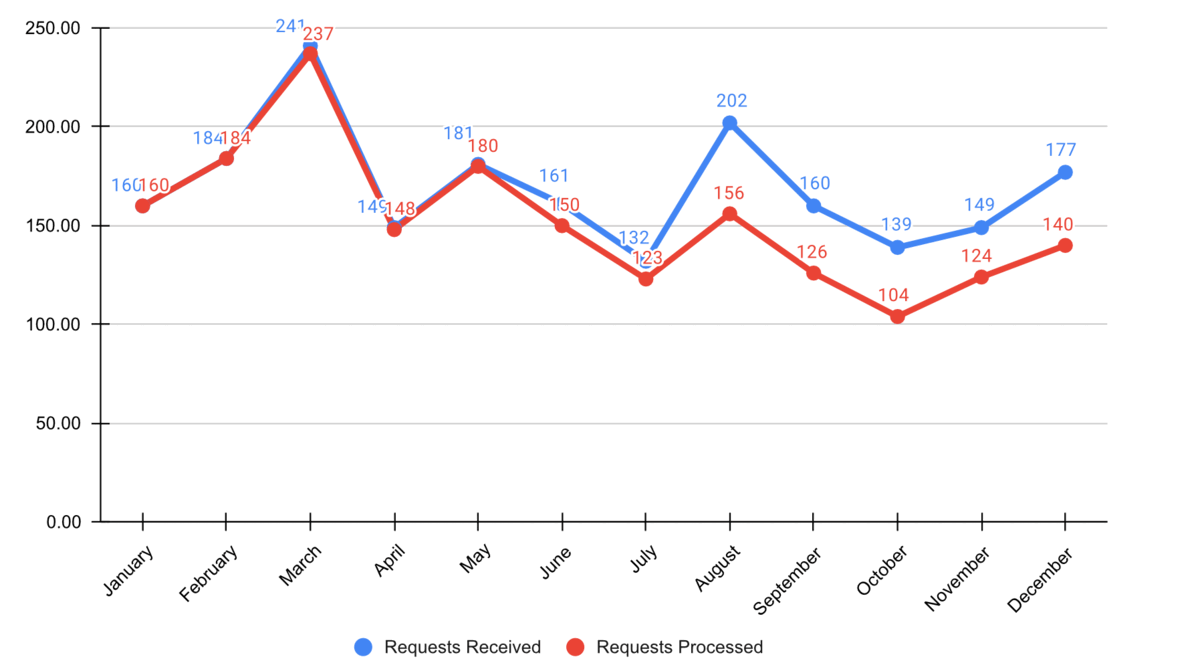
Step 3: Focus attention
-
start with gray, i.e., push everything in the background
-
use pre-attentive attributes like color strategically to highlight what’s most important
-
use data labels sparingly
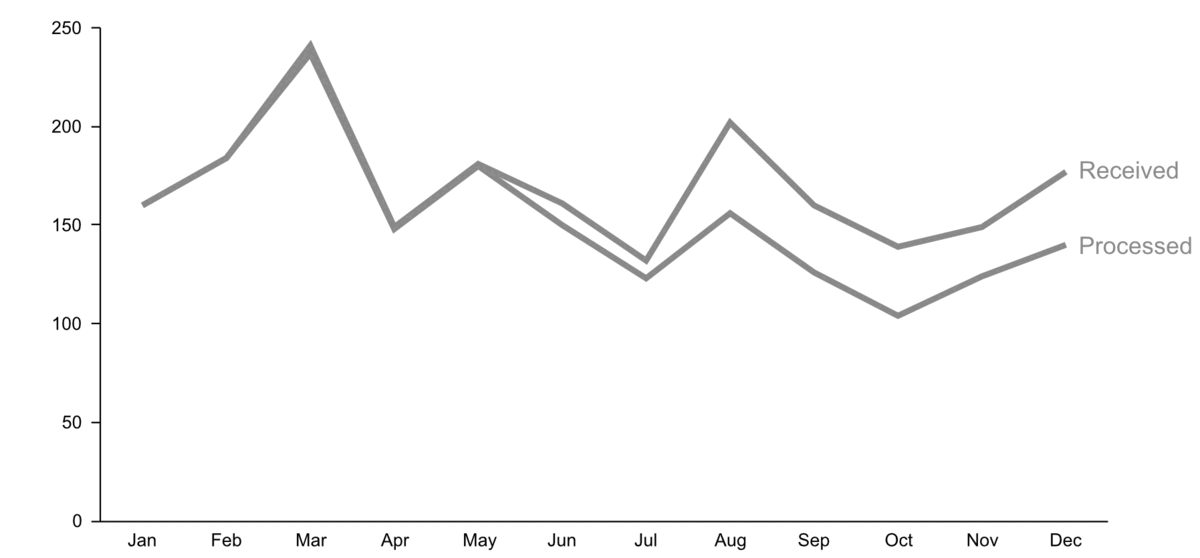
Step 4: Make data accessible
-
add context: Which values are good (goal state), which are bad (alert threshold)? Should the value be compared to another variable (e.g., actual vs. forecast)?
-
leverage consistent colors when information is spread across multiple plots (e.g., data from a certain country is always drawn in the same color)
-
annotate the plot with text explaining the main takeaways (if this is not possible, e.g., in dashboards where the data keeps changing, the title can instead include the question that the plot should answer, e.g., “Does our revenue follow the projections?”)
